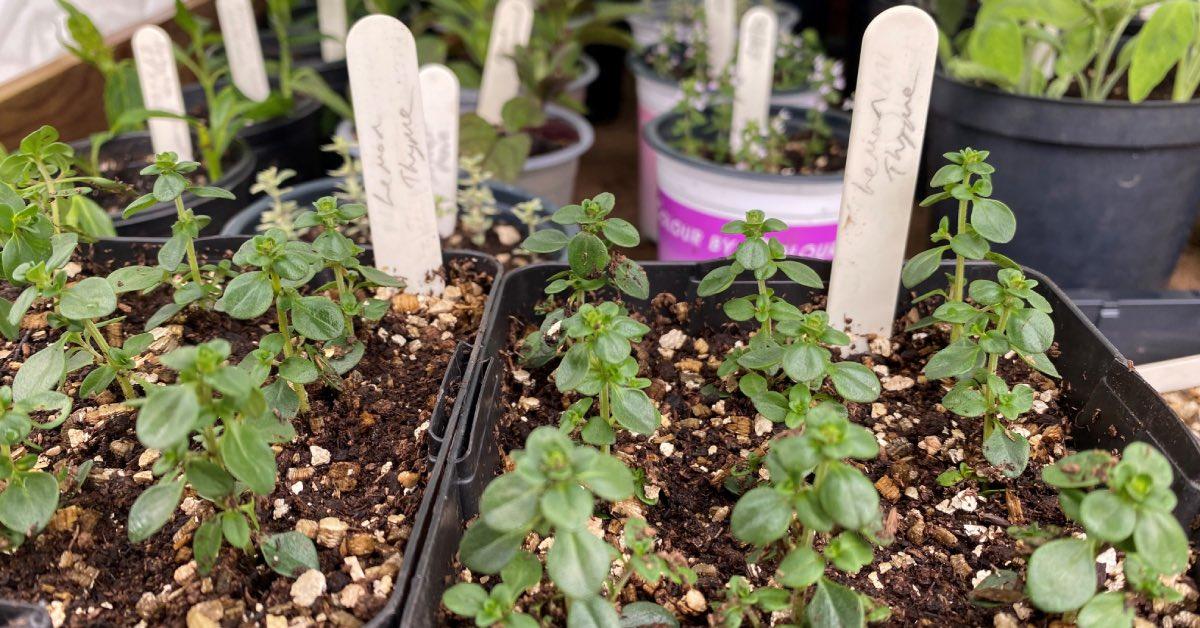Subscribe to trusted local news
In a time of both misinformation and too much information, quality journalism is more crucial than ever. By subscribing, you can help us get the story right.
- Subscription costs less than £1 a week with an annual plan.
Already a subscriber? Log in here.
19
Jun 2022
Stray Gardener: Top tips for successful propagation

 The Stray Gardener is written by Rudding Park’s Kitchen Gardener, Fiona Slight. Fiona has worked in horticulture for more than 30 years in the UK and abroad, and specialises in growing fruit and vegetables for fine dining. This month, Fiona gives you her top tips for propagating a new plant.
The Stray Gardener is written by Rudding Park’s Kitchen Gardener, Fiona Slight. Fiona has worked in horticulture for more than 30 years in the UK and abroad, and specialises in growing fruit and vegetables for fine dining. This month, Fiona gives you her top tips for propagating a new plant.
Softwood cuttings are a great way to get started with propagation and as long as you follow a few simple rules you are guaranteed success. A wide variety of perennials, deciduous shrubs and some trees can be rooted this way.
Plants such as Osteospermum, Penstemon, Pelargonium, Verbena, Salvia, Fuchsia, Sambucus (Elder), Hydrangea, deciduous Magnolia and more can all be rooted very successfully this way.

Pelargonium
Softwood cuttings are generally taken from spring to early summer, although I have had some success with soft woodcuttings of Penstemon and Pelargonium taken in August or September. They still have time to root before winter and can then be potted on in the spring quite happily.
Try and get your cutting material from young plants, the cuttings will root more easily as they have more natural rooting hormones, however, you can heavily prune older plants, feed and water well, and these can then produce new softer growth that will root more quickly.
When it comes to taking the cuttings, you need to work quickly, soft plant material loses moisture quickly once detached from the plant, so it is important to either get the material into a jar of water or a plastic bag immediately after cutting. Try and get out of the sun as quickly as possible too, with the early morning or evening the best time to crop from the plants.
It is also important you inspect the plant and chose healthy strong shoots with no evident pests and diseases and preferably no flowers or buds. You need to take off around 10cm of the chosen shoot, although this does depend on the type and size of plant you are working with. Once collected, if you can’t take the cuttings straight away, put them in a fridge to keep them cool.
Read more:
- Knaresborough flower shop set to stay as new florist takes over
- Sensory garden for visually impaired to open in Harrogate
When preparing the cuttings, use a sharp knife or pair of snippers, most do best if you cut to the node (found at a leaf joint), as this is where roots will grow from, although some plants such as Clematis do better as internodal cuttings (cut in between two leaf joints), the roots will grow from the internode.
Once you have trimmed to the node, remove the lower leaves and in most cases the tip can then be removed too. I have found some plants do best if the tip is left in and removed once it has rooted, so it may be worth trying to see if it works for you too! The cutting can then be dipped in rooting hormone powder if you prefer, although a few plants will root perfectly well without it such as Pelargonium.
The cuttings then need to be inserted into a good well-drained propagation compost, make sure the leaves sit just above the compost and do not get buried at all, as this can be a source of rot in the cutting. Water the cuttings from above as this will settle them in well.

Cuttings in propagator
If you are lucky enough to have a propagator, then place the cuttings into the propagator and keep them semi shaded. If not, they will root perfectly well placed in a plastic bag that is tied at the top and put on a windowsill out of direct sunlight. Keep checking the cuttings to ensure they are moist enough, generally three to four weeks is enough to get good roots on a soft woodcutting. Then it’s just a case of taking them out of the propagator and once you see the roots coming out of the bottom of the pot, get them potted on.
Voila! You have the start of some new plants, have a go, it really is worthwhile.
Five top tips for July:
- Its not too late to plant autumn flowering bulbs such as Nerines, Colchicums and Amaryllis
- This is the best time to prune deciduous Magnolias if they need it
- Feed Tomatoes, Melons and Peppers with a high potash feed for better fruiting
- Damp down your greenhouse on hot days to avoid overheating
- Make sure you tie in climbers and ramblers as they grow to keep them tidy
0